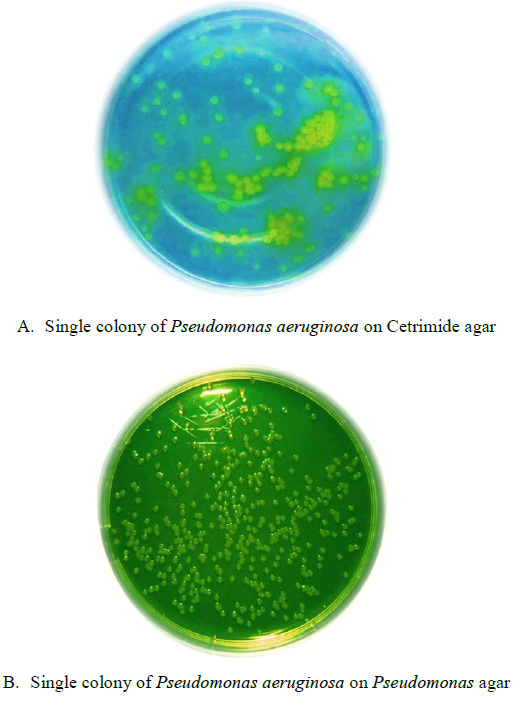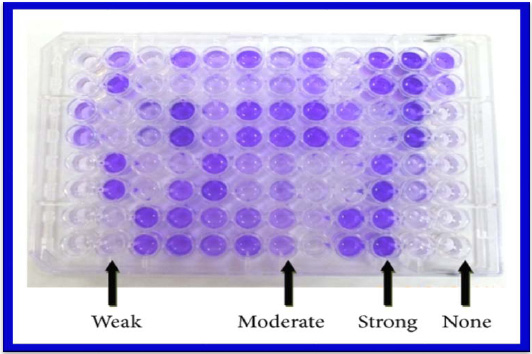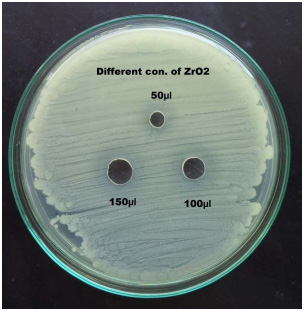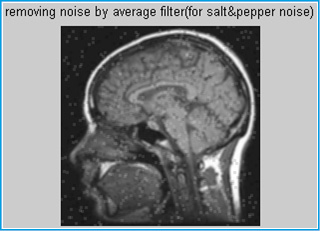Department of Biotechnology, Koneru Lakshmaiah Education Foundation, Guntur, India
Corresponding author Email: kkchandrika@kluniversity.in
Article Publishing History
Received: 01/11/2018
Accepted After Revision: 21/12/2018
In this study, characterization of the immobilized yeast cells for ethanol production by varying the initial sugar and yeast cell concentration was performed. The results have indicated that the effective fermentation can be achieved using 1% of the immobilized yeast cells with 10-12% of initial total reducing sugar concentration. The role of plant and fungal based chemicals as activators were studied and the studies indicated that Chitin and Rhizopus Oryza biomass has shown significant effects of increase in fermentation rate (47% and 23.94%) in free and immobilized cell –activator systems respectively. Continuous ethanol production studies with immobilized yeast cells suggested that the productivity can be improved up to 100% by reducing retention time. Also, these studies confirmed the reusability of beads for up to 16 days without losing activity.
Ethanol Fermentation, Molasses, Immobilization, Activators, Reducing Sugar
Chandrika K, Choragudi S. F, Srimukhi R, Salma R. Characterization and Continuous Production of Ethanol Using Immobilized Yeast Cells. Biosc.Biotech.Res.Comm. 2018;11(4).
Chandrika K, Choragudi S. F, Srimukhi R, Salma R. Characterization and Continuous Production of Ethanol Using Immobilized Yeast Cells. Biosc.Biotech.Res.Comm. 2018;11(4). Available from: https://bit.ly/2m1vOJs
Introduction
The gradual depletion and the environmental deterioration resulting from the over consumption of petroleum derived transportation fuels have gained great attention across the world. Hence, it is necessarily important to develop alternatives that are both renewable and environmentally friendly. Ethanol is one of the most exotic synthetic oxygen-containing organic chemicals. It has unique properties as a fuel, a solvent, a beverage, a germicide, an antifreeze that reduces greenhouse gas (GHG) emission, lessens the dependence on fossil fuels, and improves vehicle performance. It is generally manufactured by three types of agricultural raw materials viz., saccharine materials, starchy materials and lignocellulosic biomass using bacteria and yeast. Fermentation using yeast and sugarcane molasses is one of the widely used and ancient fermentation systems.
Despite the great advantages and importance, fuel ethanol is not competing to cheaper oil derivatives because of its high production costs due to low productivity. Hence, attempts cells, immobilization of whole cells, vacuum fermentation and optimization of operating parameters to reduce production costs. Several studies show that ethanol productivity can be increased by the addition of ergosterol (Patil, 1985, Kanellaki 1989, Patil 1990, Jozef 2003, Giuliano, 2004, Kara. 2005) chitin and polysaccharides (Neetu 2006), mineral kissiris skim powder and fungal mycelium
Different working parameter condition shows the optimal condition of initial sugar concentration, pH, temperature, dilution rate and bead size on maximum production of ethanol (Bardi,1994). Using continuous immobilized yeast fermentation, microalgal hydrolysate was converted into ethanol at a yield of 89% (Kyoung 2014) conversion of biomass into ethanol varies considerably depending on the nature of feedstock primarily due to the variation in biochemical composition, and so, only a few feedstocks have been exploited commercially (Zabed 2017).
In the present study, the effect of initial sugar concentration, yeast cell concentration on an immobilized cell system and the effect of different activators (saw-dust, chitin and Rhizopus-Oryzae) on free and immobilized cell system is studied. Continuous production of Ethanol was done to study the effect of flow rate and the reusability study. The reduction of bead size increased mass transfer of substrates from the liquid to the immobilized cells accelerating sugar consumption and ethanol production (2018). Fermentation of sugar for production of ethanol was carried out using Saccharomyces cerevisiae cells immobilized in calcium alginate films, (Leal 2018).
Materials and Methods
Microorganism
Commercially available fresh baker’s yeast was used for experimentation. The culture was obtained as a cake. The same was stored under 0-4OC temperature till it was further used.
Preparation Of Immobilized Yeast Beads
About 4g of sodium alginate was weighed and dissolved in 100mL of boiling distilled water and made slurry. In another beaker 8g of fresh baker’s yeast was dissolved in distilled water. The two solutions were mixed and made slurry. The final volume was adjusted to 200mL with distilled water. The slurry was extruded drop wise into 0.2M CaCl2 solution with the help of a micro-tip connected to silicone tubing, which passes through peristaltic pump. The beads were left in calcium chloride solution over night for curing. The beads were then taken out, washed and stored till they were further used.
Preparation Of Molasses Solutions
Pre-activated yeast beads of 1% concentration were taken in four conical flasks (250mL), each containing different concentrations of molasses solution (i.e., 6%, 10%, 12%, 16% and 20%). The activity of immobilized yeast was observed for different time interval like 24, 48, 72, 96 and120 hours. The amount of total reducing sugars was measured at each time interval.
Preparation Of Yeast Cell Concentration
A series of batch experiments was conducted to test the effect of yeast bead concentration on alcohol yield. Yeast beads of various concentrations were taken (i.e., 0.5%, 1%, 2%, 3%, 4%, and 5%) and activated for overnight in the medium separately. Each of the beads was then transferred to 12 percent molasses solution and the reduction of total reducing sugars was estimated.
Fermentations With The Use Of Activators
Experiment on external activator compounds were conducted by using 1% of activators (i.e., chitin, sawdust and Rhizopus-Oryzae biomass) with 1% free and immobilized yeast cells in conical flasks (250mL). The fermentation was allowed for 10 hours. The amounts of total reducing sugars were measured after every two hours.
Experimental Setup For Reactor
Initially, the fermentation was carried out batch wise using immobilized yeast cells until the substrate was depleted and was then switched to a continuous mode with the feeding of molasses. Fresh molasses was continuously supplied to the fermenter with a peristaltic pump and at the same time cell free liquid was removed from the bio-reactor through the filter module. As a whole, the volume of broth in the fermenter was controlled at 5 liters by making the total filtrate flow (outlet) rate counter balance the total feed flow rate. The fermentation was carried out at a room temperature.
Analytical Methods For Sugar And Ethanol Estimation
Amount of total reducing sugar was estimated by the DNS method (Milller,1985). The ethanol concentration was measured by gas chromatography (Thermofisher, 8610) using a chromosorb 101 column (80 to 100 mesh of packing material, 1/8 inch outer diameter and 6 ft long stainless steel tube) with flame ionization detector. Temperatures of the detector, injector and column oven were 300oC, 200oC, and 150oC respectively. Nitrogen was used as a carrier gas. The data reported for sugar concentration and percent alcohol were the mean value of at least two independent samples analyzed in duplicate.
Results and Discussion
Effect Of Sugar Concentration Of Ethanol Fermentation Rate
It was evident from the Fig.1 that total reducing sugar level in the fermentation broth has influence on the fermentation rate. The maximum reduction in the amount of total reducing sugar was observed after 24 hours of the fermentation in the broth with 12 % TRS. As this total reducing sugar level increased beyond 12 percent, the efficiency of the yeast fermentation has reduced, indicating the high sugar concentration decreased the fermentation rate.
 |
Figure 1: Effect of initial sugar concentration on ethanol fermentation rate. |
The reduced sugar conversion with the higher concentration of molasses is probably due to osmotic effects (Roukas 1994), decreased water availability and plasmolysis of cells that leads to the growth inhibition of cells. Though the initial fermentation rate was less in 16 and 20% broth than in 12 percent broth, it increased with increase in fermentation time. The amount of TRS left after 120 hours of fermentation was higher at 16% and 20% broth than in 12% broth. This suggests that the fermentation rate decreased with increase in alcohol concentration.
Effect Of Immobilized Yeast Concentration On Ethanol Fermentation Rate
As evident from the Fig.2, the rate of fermentation increased with increase in immobilized yeast concentration. However, the left-over sugar concentration was observed to be increasing with decrease in amount of immobilized yeast crystal concentration. In case of fermentation with the 5 % immobilized yeast, the fermentable sugars were completely utilized within 4 h of fermentation time.
 |
Figure 2: Effect of immobilized yeast concentration on ethanol fermentation rate |
The data also indicated that the effective fermentation can be achieved using 1% of immobilized yeast crystals with 12% TRS level in the fermentation broth. However, the economic feasibility in ethanol fermentation can be achieved with 5 percent yeast crystals. The data acknowledge that 12% concentration broth is more productive for ethanol production.
Effect Of Activators On The Fermentation Rate
As evidenced from the (figure 3), in the free cell system it was observed that control has shown more effect than activators for the initial 2 hours of fermentation time however , the activator effect was observed starting from 4 hours which was pronounced only at the end of 6 hours of fermentation time where chitin supplemented broth showed 47% increase in fermentation rate followed by Sawdust (20.86%) and Rhizopus Oryzae (12.5%) over control where maximum sugars were degraded.
 |
Figure 3: Effect of activators on the free cell fermentation rate |
The effect of activators (Fig.4) on immbobilized cell system shows a similar trend of free cell system was repeated where control showed more effect than activators for initial 2 hours while the effect of activators was observed starting after 4hours , however, unlike the free cell system where chitin showed much effect here in this case Rhizopus oryzae has shown significant effect, i.e., a 23.94 % increase in fermentation rate followed by saw dust (16.37%) and Chitin (12.32%) with respect to control after 6h where maximum sugars have been degraded.
 |
Figure 4: Effect of activators on immobilized cell fermentation rate |
Chitin, a cell wall component of yeast increased the ethanol production, which is probably not contributing as a nutritional factor needed by yeast cells, but may have released some nutritional factors that lead to the partial hydrolysis of complex substances present in the molasses or may be due to the removal of inhibitory compounds. The increased in ethanol productivity due to Sawdust is due to cells immobilized on dilignified cellulosic material that lead to an active bio-catalyst reducing the activation energy (Bardi, 1994). Besides, Sawdust may have enhanced the catalytic action of some enzymes involved in the fermentation pathways or any undesirable substances in molasses may be excluded by their adsorption on the dilignified materials.
Patil and Patil found the acceleration of ethanol production activity of yeast in cane molasses fermentation by the addition of fungal mycelium (Patil 1990). Besides, brewery yield of ethanol was increased by the addition of Proteo-lipid from Aspergillus and Oryzae promote yeast growth and yeast durability against ethanol and salt concentration.In the present work we hypothesize that the activators in common may have released some nutritional factors from other complex polysaccharides (as molasses contain different polysaccharide beside sugars) which degraded the sugar. This activator effect is seen more pronounced only at lower, reducing sugar concentrations (after 50% of initial sugar degradation) which is clearly reflected in our work, where the increase in fermentation activity has started at 4 hours of fermentation time both in free and immobilized activator system. This may probably due to less mass transfer effect of activators in high sugar concentration.
Continuous Production Of Ethanol Using Immobilized Yeast
To evaluate the sodium alginate- yeast beads for continuous production of ethanol, the experiments were planned using 5-L reactor with an inlet and outlet. The reactor was equipped with an overhead stirrer so as to provide uniform mixing.
Initially the reactor was run in batch mode for 24h there after the inlet feeding was initiated at a flow rate of 190mL h-1 having residence time of 26.3 hours. The productivity was observed to be 2.49g L-1 h-1. Once the stabilization was achieved at this flow rate it was increased so as to achieve the residence time of 21.73 h (flow rate-230mL h-1). It was noticed that at this residence time the productivity was increased in the outlet at the tune of 50%. The same was reflected by the decrease in sugar concentration in the outlet. To evaluate further, experiments was conducted at flow rates of 270mL h-1 and 280mL h-1 with residence time of 18.51 h and 17.85 h respectively.
As evidenced from the figure 5, the productivity increased with increasing flow rate up to a certain level (270mL h-1) beyond which the increased flow-rate resulted in the decrease of productivity.
 |
Figure 5: Continuous production of ethanol using immobilized yeast cells at different flow rates |
Data indicated that critical dilution was achieved at around (270mL h-1) having maximum specific growth, increase in flow rate might have led to washing out of cells resulting in decreased productivity.
Based on the above data, the continuous production of alcohol using immobilized yeast beads in a CSTR was continued using at a flow rate of 190mL h-1 (residence time of 26.31h) to access the reusability of immobilized yeast breads. The data were presented in the graph (figure 6). The results indicated that production of ethanol ranged from 6-6.8%, depending on the initial TRS loading.On an average, consistent ethanol production was observed for more than 16 cycles (maximum cycles studied). It was observed that the productivity levels were varied as the fermentation time increased. A visual observation indicated that a slower rate of fermentation was observed in the molasses vessel because the medium is not sterilized.
 |
Figure 6: Continuous production of ethanol using immobilized yeast cells at a fixed flow rate |
Conclusion
Effective Fermentation can be made with 1% of Yeast cell concentration and 12% of initial TRS loading. Plant and Fungal based Activators were shown to significantly increase the fermentation Rate. Continuous production of Ethanol showed an increase in productivity up to 270mL h-1 beyond which showed reversed trend. Continuous production of ethanol at a fixed flow rate showed the beads can be reused up to 16 cycles.
References
Atiyeh, H., and Duvnjak, Z (2002) Production of fructose and ethanol from sugar beet molasses using Saccharomyces Cerevisiae ATCC3658. Biotechnol. Progrs Vol.18: Page234.
Bardi, E., and Koutinas, A.A (1994) Delignified cellulosic material supported Biocatalyst for room and low temperature wine making. J. Agric. Food Chem. Vol.42: Pages 221- 226.
David Orrego (2018) Ethanol production from coffee mucilage fermentation by S. cerevisiae immobilized in calcium-alginate beads. Bioresource Technology Reports Vol. 3: Pages 200-204.
Eduardo Leal (2018) A novel method for bioethanol production using immobilized yeast cells in calcium-alginate films and hybrid composite pervaporation membrane. Bioresources Technology Vol. 247:Pages 165-173
Giuliano, D., Daniel, P. S., and João B. de Almeida e Silva (2004) Factors influencing ethanol production rates at high-gravity brewing., Lebensmittel- Wissenschaft und-Technologie Vol.37 No 7:Pages 797- 802.
Józef, S.N., and Ali, Al-K.Production (2003) Properties, and Some New Applications of Chitin and Its Derivatives., Crit. Rev. in Food Sci. and Nutr. Vol 43: Pages 145-171
Kanellaki,M., (1989) Ethanol production by Sacchromyces Cerevisiae promoted by Y-alumina. Biotechnol. Bioeng Vol. 34:Pages 121-125.
Kara, J. T., David, E. B and Marjorie, L. L (2005) Elasticity and Phase Behavior of DPPC Membrane Modulated by Cholesterol, Ergosterol, and Ethanol., Biophys. J Vol. 89 No 4:Pages 2481–2493..
Kourkoutas, (2006) Effect of storage of immobilized cells at ambient temperature on volatile by-products during wine- making. J. FoodEng Vol.74 No 2:Pages 217-223.
Kyoung H G (2014) Bioethanol production from the nutrient stress-induced microalga Chlorella vulgaris by enzymatic hydrolysis and immobilized yeast fermentation, Bioresource Technology,Volume 153,Pages 47-54.
Milller, G.L (1985) Use of DNS reagent for the determination of reducing sugars. Anal. Chem. Vol.31: Pages 426-428
Neetu JL et al (2006) Biotechnological aspects of chitinolytic enzymes: A review. Appl.Microb.and Biotech Vol.71: Pages773-782.
Patil, S.G., and Patil B.G (1990) Acceleration of ethanol production activity of yeast in cane molasses fermentation by the addition of fungal mycelium.Enzyme Microb. Technol Vol.12: Pages 141-148.
Patil, S.G., Gokhale, D.V. and Patil, B.G (1985) Enhancement in ethanol production from cane molasses by skim milk supplementation. Enzy Microb. Technol Vol. 8 No8:Pages 481- 486
Roukas, T (1994) Continuous ethanol production from carob pod extract by immobilize Saccharomyces Cerevisiae in a packed bed Reactor. J.Chem. Technol.and Biotechnol. Vol. 59: Page 387
Zabed LM (2017) Bioethanol production from renewable sources: Current perspectives and technological progress. Renewable and Sustainable Energy Reviews,Vol. 71: Pages 475-501


